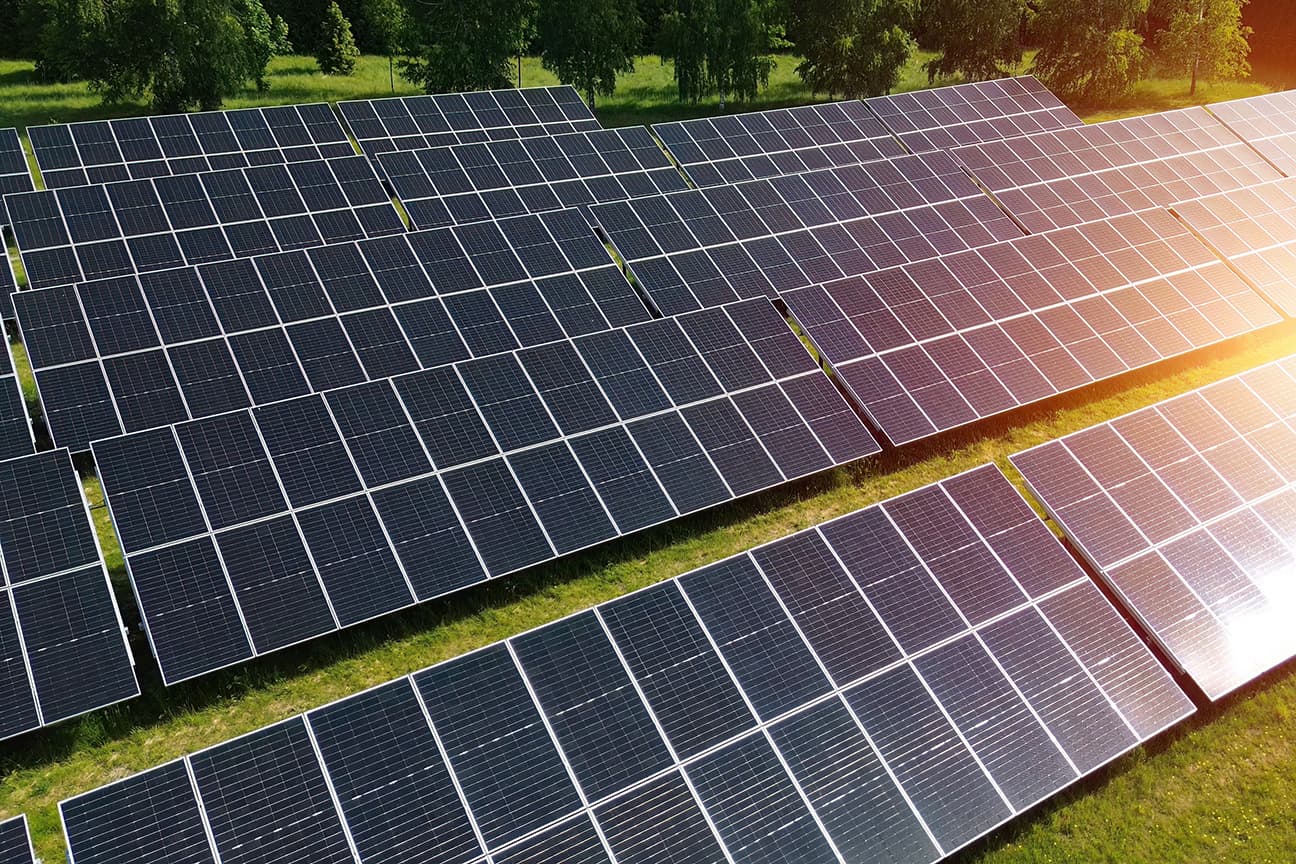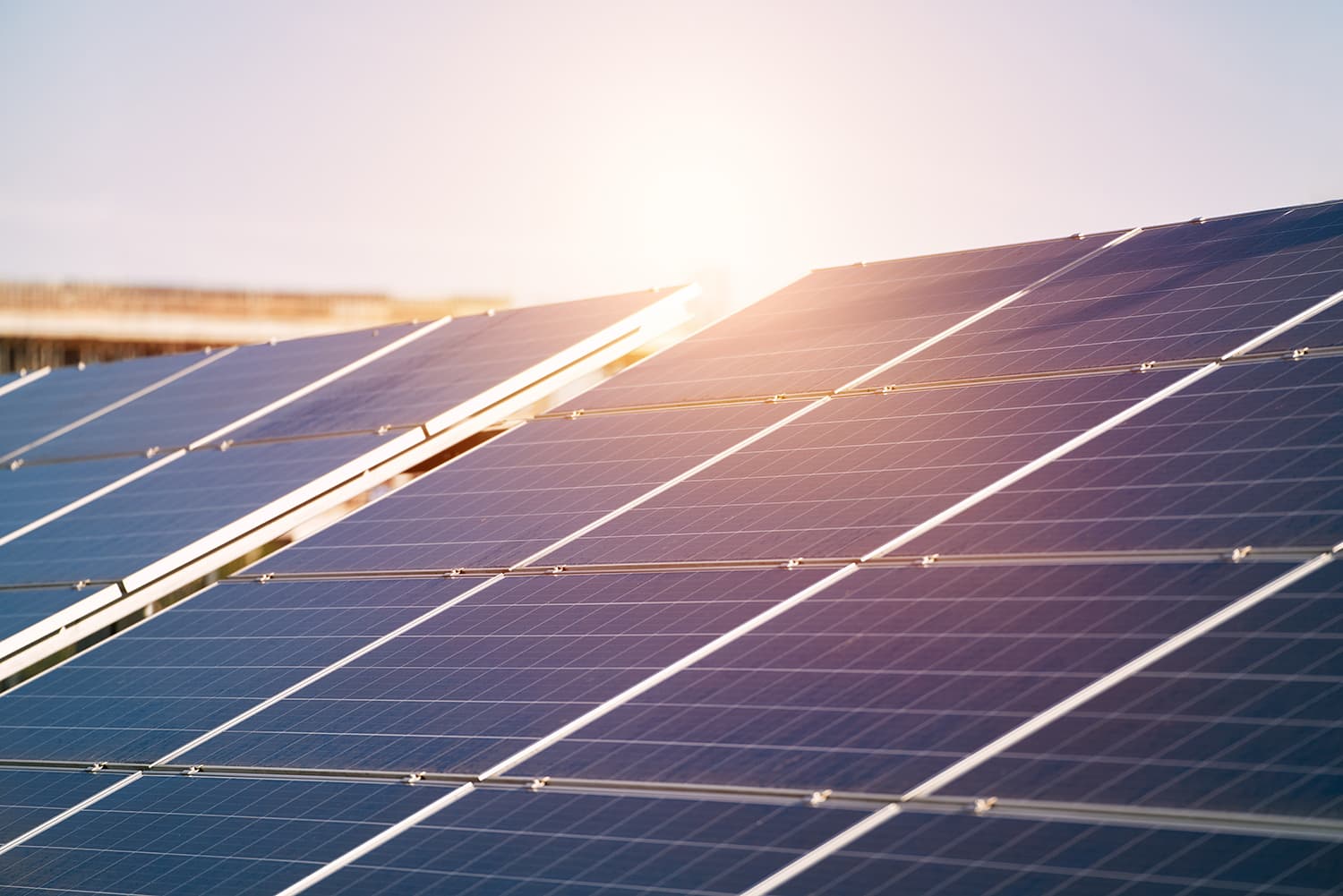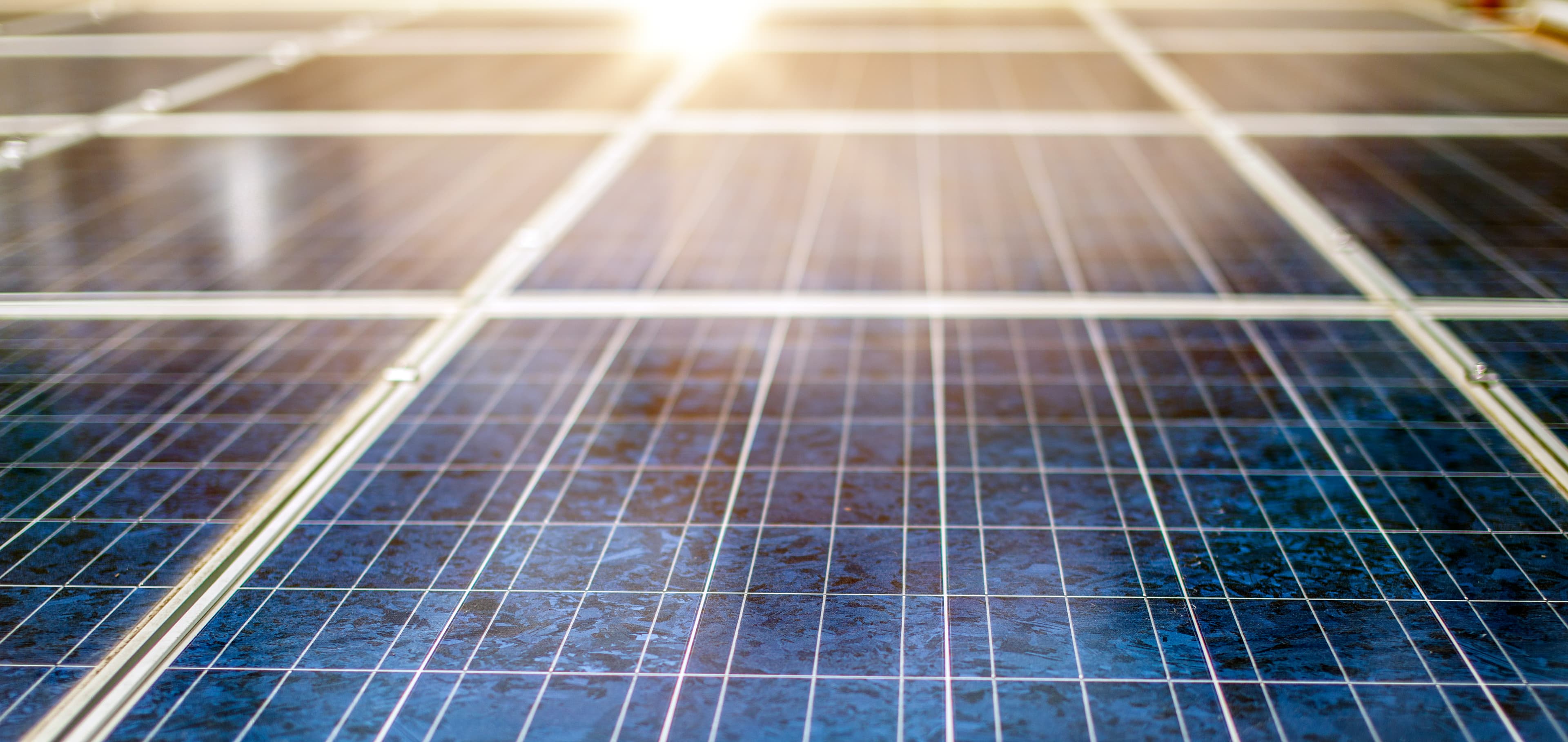Stanley Center for Peace & Security
Stanley Center – A Beacon of Regenerative Design in the Midwest
The Stanley Center for Peace and Security in Muscatine, Iowa is one of the most sustainable buildings in the world. The building is an example of regenerative design – a building that gives more than it takes.
What is the Stanley Center for Peace and Security?
Founded in 1956 by Max and Betty Stanley, the Stanley Center for Peace and Security focuses on three global challenges: mitigating climate change, reducing the risk presented by nuclear weapons, and preventing mass violence and atrocities. To address climate change in its own space, Stanley Center has undertaken an ambitious project to become the first Living Building Challenge certified building in Iowa. The Living Building Challenge is the most exacting construction sustainability standard in the world – only 29 buildings have met this standard worldwide.
What is the Living Building Challenge?
The Living Building Challenge (LBC) is a project of the International Living Future Institute (ILFI). LBC buildings must be net energy positive – generating all of their own power and then some – and also create a positive impact on people and connect occupants to light, air, food, nature, and community. The LBC is conceptualized as a flower with seven petal: place, water, energy, health & happiness, materials, equity, and beauty. To become LBC certified, a building must address all seven petals.
Process
Why LBC?
Stanley Center worked alongside its architecture firm, Neumann Monson of Iowa City, on a values-based design approach. After identifying Stanley Center’s core values and evaluating other standards and certifications, Neumann Monson suggested the Living Building Challenge.
“The Living Building Challenge really spoke to us because of its alignment with our values and because of the holistic nature of it. The more we learned about it, the more it checked every box and the more it made sense to pursue.”
– Mark Seaman, Vice President and Director of Communications
Part of Stanley Center’s climate change work focuses on less explored pathways to meeting the 1.5 °C temperature limit agreed upon at the Paris Climate Accords in 2015. Building design, product lifecycles, and sustainable materials are among the pathways Stanley Center identified.
Lowering the barriers to sustainable building design was a key decision making point for Stanley Center leadership. “We understood the value of the permanent change that [the building] can help create in the design and construction industry,” said Mark Seaman. “This building will double as a teaching tool for sustainability and green design.”
Site Selection
Stanley Center considered both renovation and new construction at 60 different sites. In the end, the Center chose the former Muscatine Public Library building, which sat vacant for several years after the library moved in 2018. The former library offered the opportunity to preserve a century-old center of learning while adding a new sustainability-focused design.
Community Involvement
Stanley Center reached out to the community with an assessment survey asking local residents what to consider with the new space. They received over 100 responses, which helped guide design decisions.
Stanley Center also worked with the Muscatine Center for Social Action (MCSA) next door, which provides a food pantry, medical and social services, and shelter for people experiencing homelessness. “They were a great partner throughout,” Mark said. MCSA helped identify the need for the solar canopy and provided input on what to plant in the garden.
Regenerative Design – Challenges & Solutions
Ambitious undertakings bring many challenges. Stanley Center faced several, including insufficient space for a beyond-net-zero solar array, water usage and bio retention challenges, and the difficulties of navigating ILFI’s Red List.
Solar Canopy
Ideal Energy of Fairfield, Iowa, installed a solar array and battery storage system to help meet Stanley Center’s beyond-net-zero goal. The 153 kilowatt (kW) solar array Ideal Energy designed is too large for the available roof space, but this became an opportunity rather than a showstopper. A solar canopy connecting Stanley Center to the Muscatine Center for Social Action supports part of the solar array and provide shade and shelter to the people waiting in line for the food pantry. The system, which includes 175.5 kilowatt-hour (kWh) of battery storage composed of 13 Tesla Powerwalls, produces an estimated 109% of Stanley Center’s electricity needs.
“Everything is electric. We don't burn any fossil fuels whatsoever.”
– Dane Lovell, Facilities Maintenance Superintendent
Water Catchment and Runoff
LBC requires buildings to minimize their water footprint. Stanley Center uses permeable pavers and a bioretention area to control runoff. Rainwater is caught on the roof and sent to storage tanks on the side of the building. Filters and pumps make the water available for building use. Stanley Center is connected to city water only for its fire sprinkler system.
Even with rainwater catchment and storage, permeable pavers, and a bioretention area, Stanley Center was not able to eliminate all of its impact on city infrastructure. To qualify for the LBC, Stanley Center offset its water and sewer usage by paying for low flow fixtures and toilets at MCSA next door.
Food & Health
LBC requires buildings to grow a certain amount of food. Stanley Center’s food production includes both indoor “lettuce walls” and an outdoor courtyard garden, including both native plants and vegetables.
Stanley Center also has a fitness room, indoor bike storage, lockers, and showers. Two wellness rooms upstairs include massage tables and facilities for nursing mothers.
Natural Light
All offices are upstairs and all are the same size. The offices are relatively small; employees are encouraged to leave their offices to use the meeting rooms, conference rooms, and lobby seating areas when they have visitors. The lobby has a multiple skylights and several Ficus trees, connecting employees to the outside.
Although LBC requires offices to have operable exterior windows, this was not possible on the northwest wall. That wall is on the property line and city code does not allow windows to open that close to the property line. Stanley Center received permission from LBC to substitute skylights and living walls (similar to the lettuce walls, but with native plants instead) in these offices. Designers worried that employees would not want these offices, but they have proven to be the most popular.
Sustainable Materials
ILFI maintains a Red List of banned chemicals that cannot be used in an LBC certified building. The list currently contains over 10,000 chemicals. “Anything that's in this building has to go through a vetting process right down to the molecular chemical level, just to make sure it doesn't have that kind of stuff in it,” said Dane Lovell.
Only vetted products can be included on the allowed list and used in the building. “Once [a product] goes through the whole vetting process, it goes on that list and then it can stay on that list so anybody else can use it,” Dane said. “We probably put a couple hundred new items on that list.”
An example of a sustainable material used in Stanley Center is Accoya – a soft pine that is treated with a vinegar solution to harden it, allowing the Netherlands-based manufacturer to warranty the product for 50 years. Stanley Center used Accoya siding in the courtyard garden area.
Solar Project Specs
- Array Size: 149.4 kW DC
- Storage Size: 175.5 kWh
- Battery Storage: 13 Tesla Powerwall Batteries
- Bi-Facial Panels: 332 Heliene 450 watt bifacial module
- Annual Production: 186,142 kWh (est. 1st year production)
- Electrical Usage Provided by Solar: 109% (beyond net zero)
- Carbon / Emissions Reduction: 3,111 metric tons CO2 over 25 years
Project Awards


Project Gallery
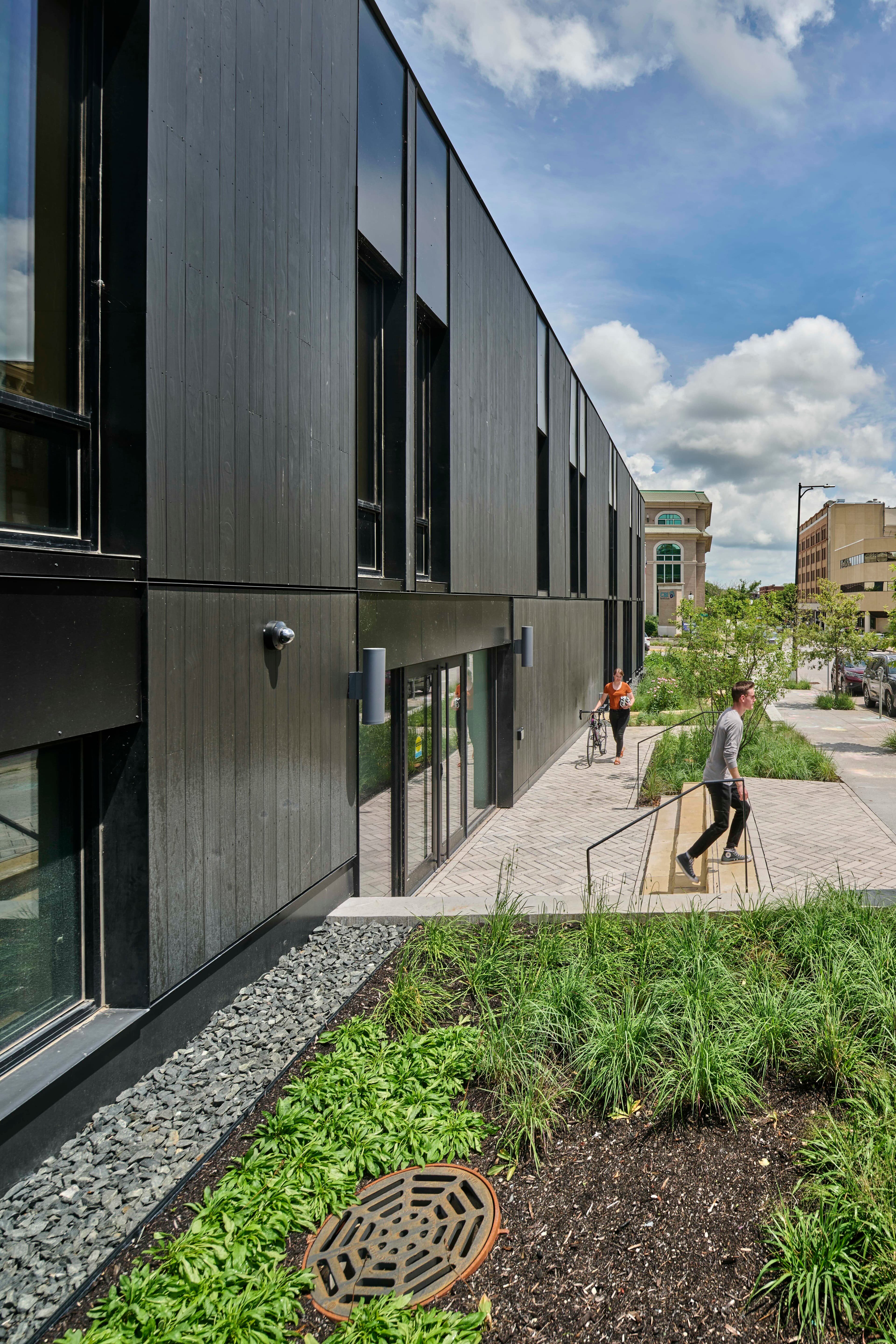
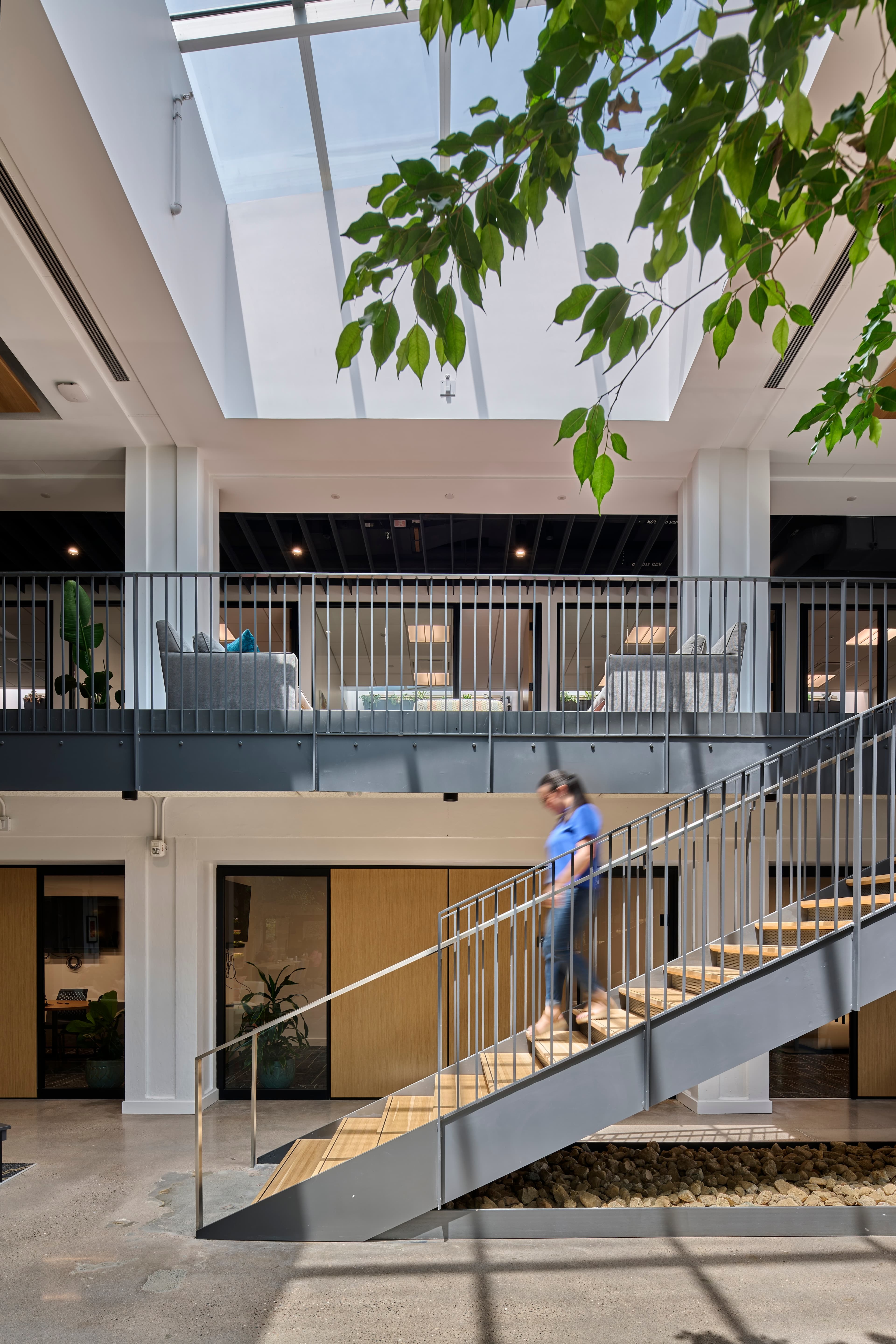
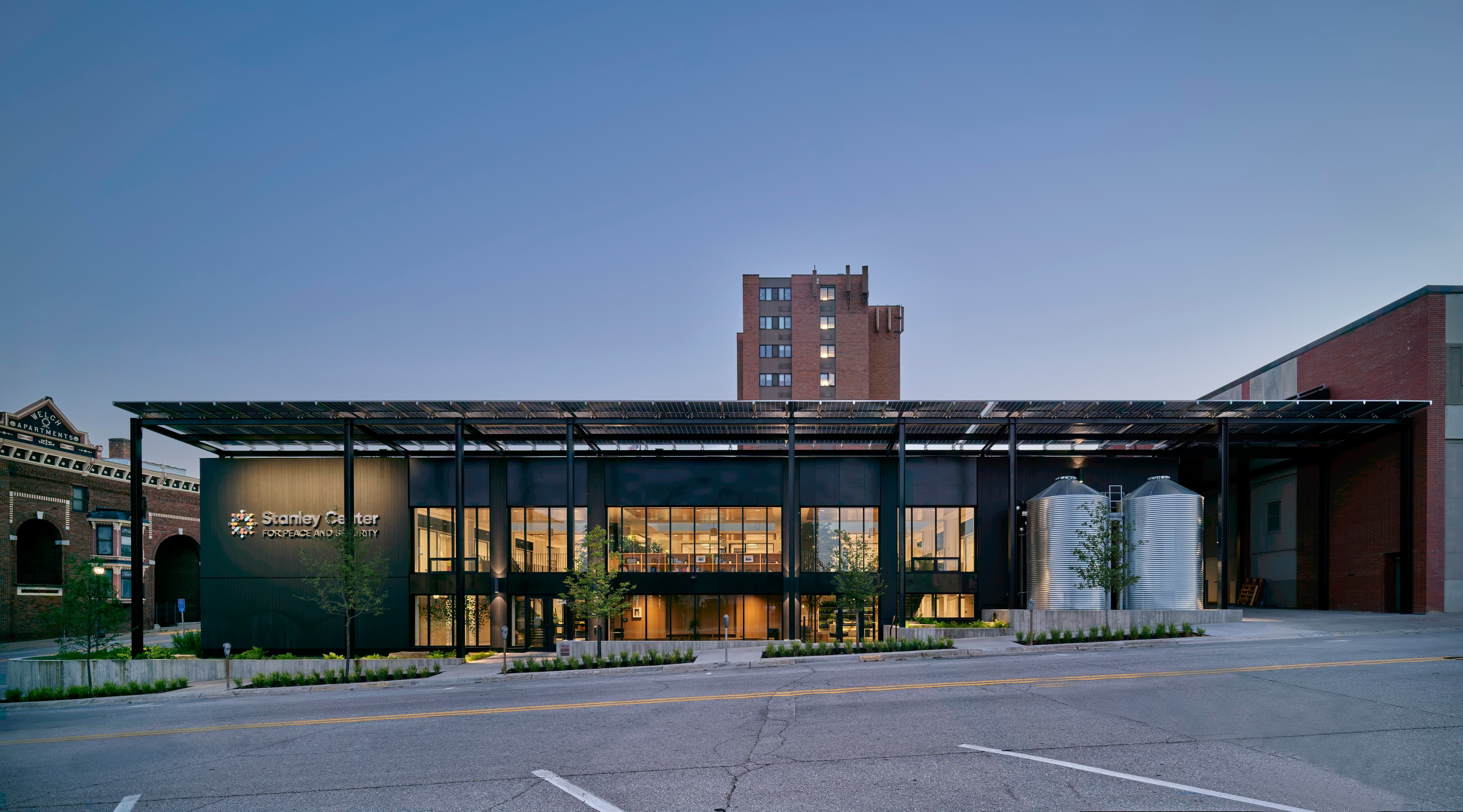
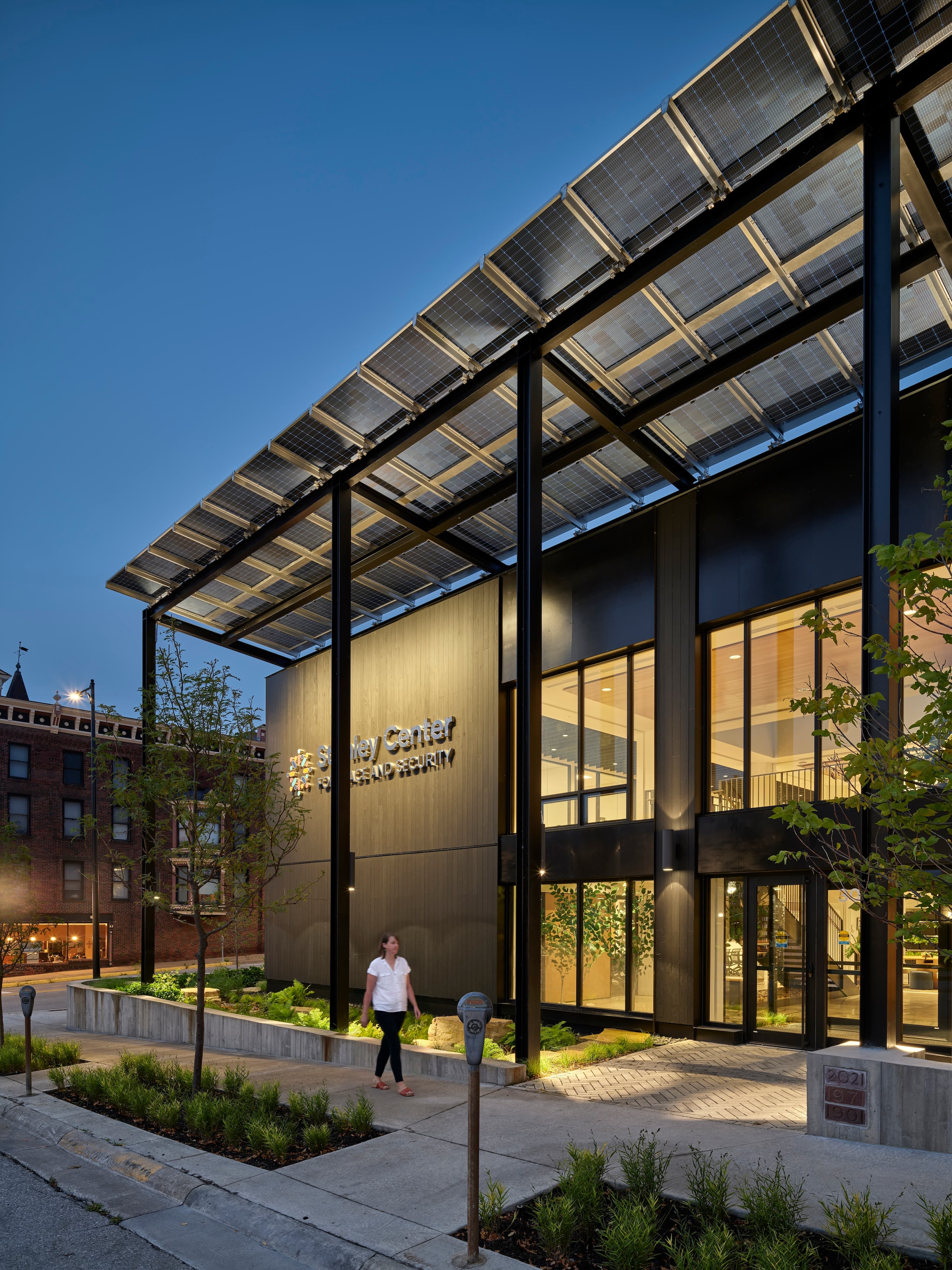
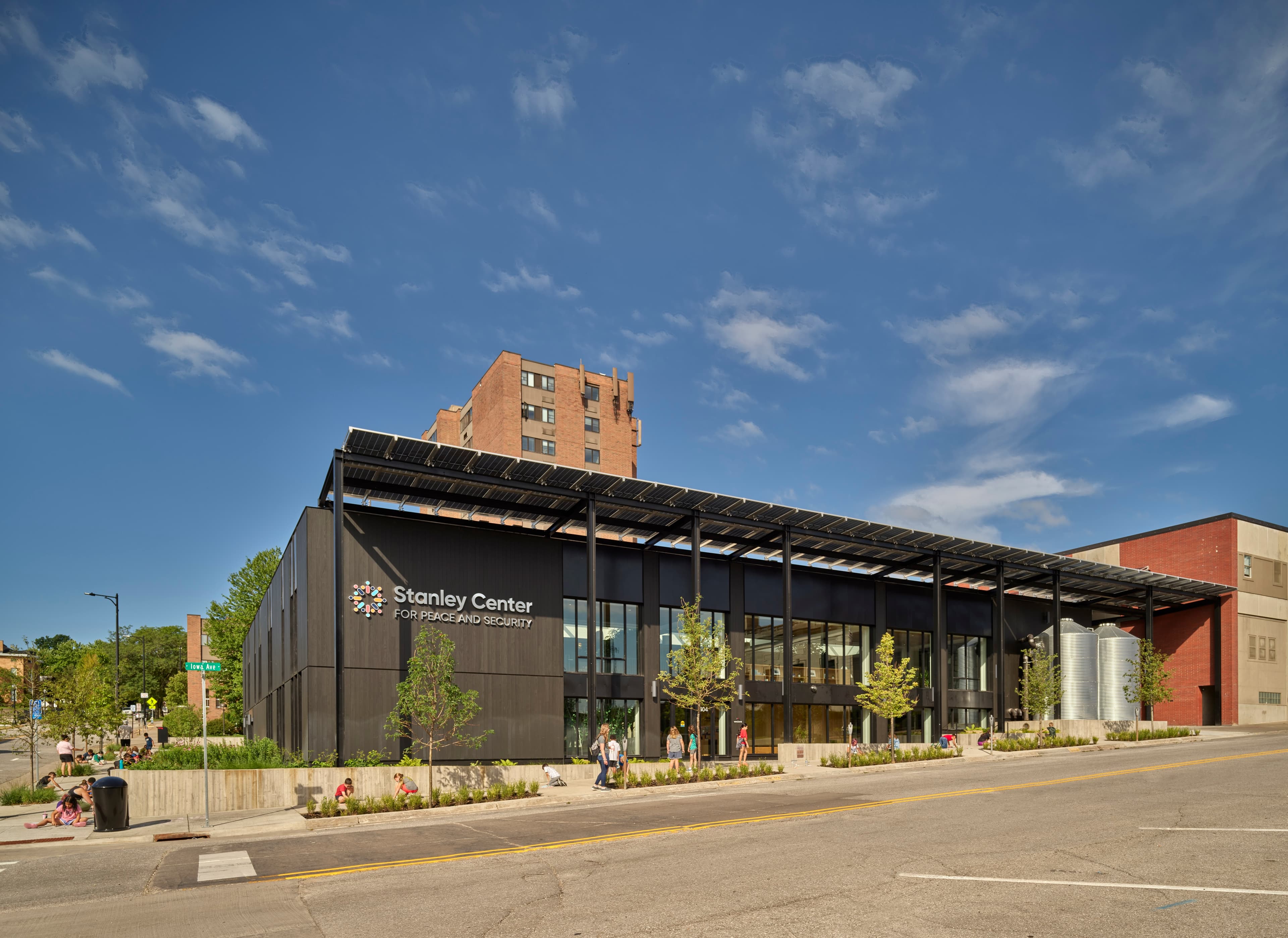
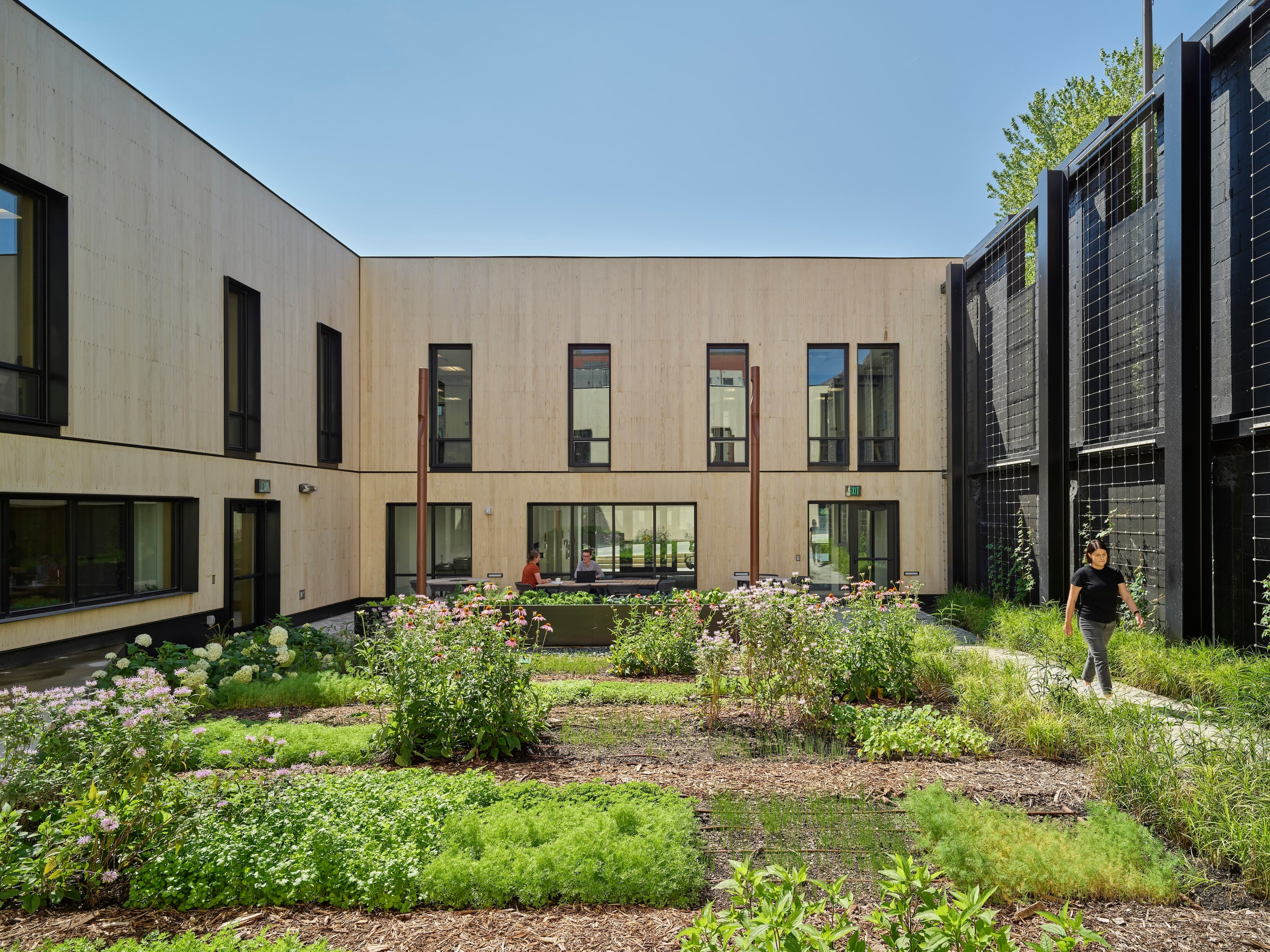
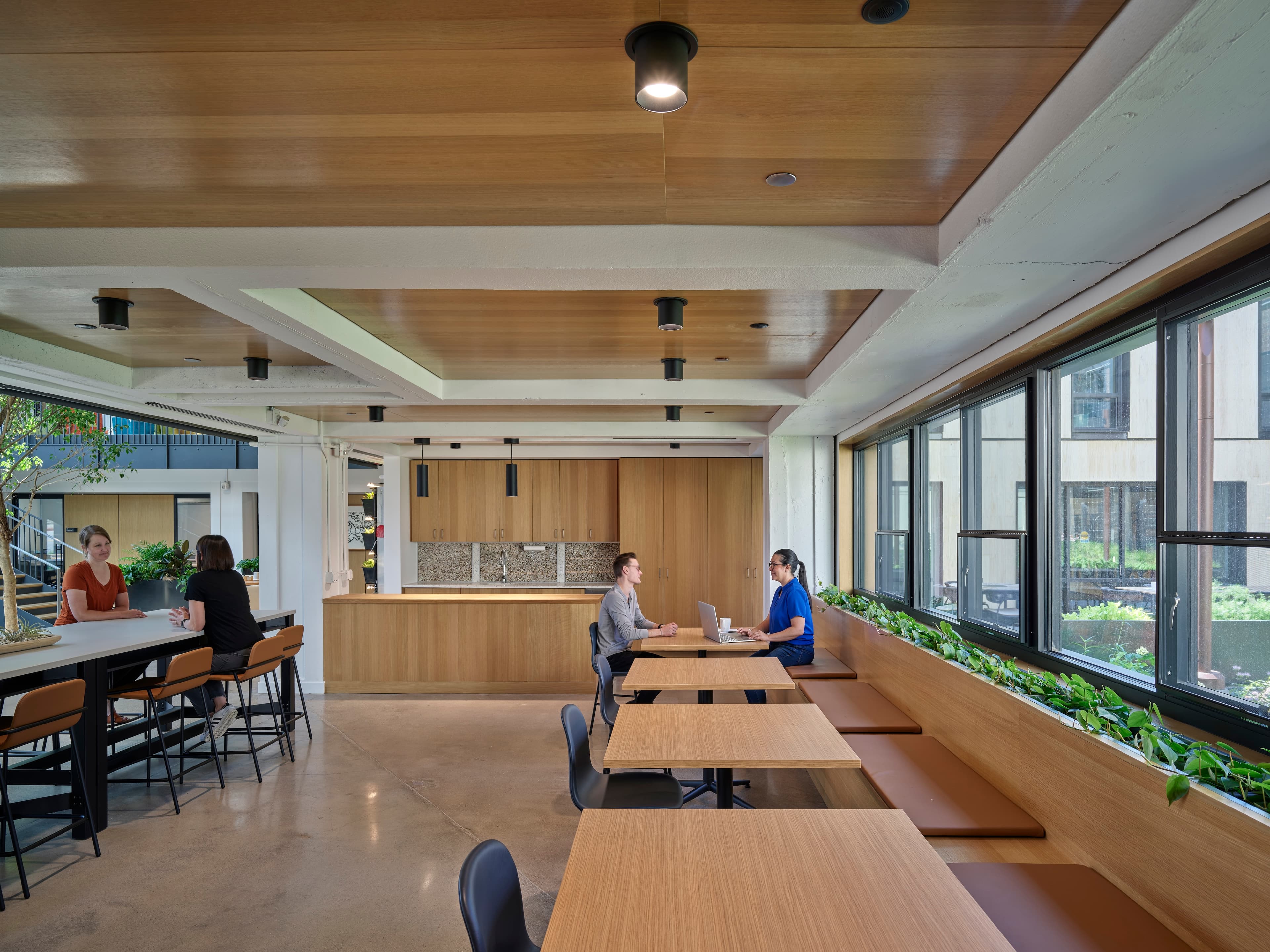

Find Your Ideal Solution
Reach out to find out how our solar solutions can benefit you.

